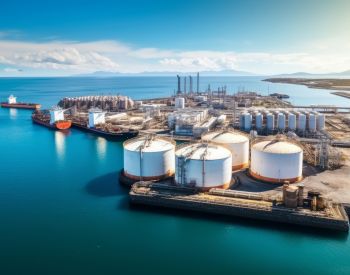Client
Interconnector UK Limited
Assets
Subsea pipeline and onshore terminals
Location
UK, Belgium and the North Sea
Client challenge
The Interconnector pipeline stretches 235km. Over a metre in diameter, and operating at pressures up to 147 bar, the pipeline is a strategic energy link between the UK and continental Europe. The pipeline runs beneath the southern North Sea, connecting Bacton in the UK with Zeebrugge in Belgium, transporting up to a third of the UK’s gas supply to and from mainland Europe.
Following a routine subsea survey, we identified a free span on the pipeline. This was where the seabed sediments had been eroded or scoured away, meaning the pipeline was no longer supported on the seabed.
The issue exceeded the pipeline’s operational allowable limit. For such a length of span, it was deemed likely that the pipeline would vibrate and, consequently, there was risk of fatigue failure. Our long-term client asked us to carry out an in-depth assessment of the pipeline. This would determine the suitability and risks associated with continuing to use the pipeline in its current state. Getting this assessment right was critical. Any incident resulting in an unplanned shutdown would have serious implications for gas supply to UK and Europe for both industry and domestic users.
How we helped
We supported our client with our expertise in engineering consultancy and integrity engineering. Our assessment involved gathering data on design parameters of the pipeline. This data was then reviewed against the current conditions of span length, considering such factors as current flow, and applying our subsea pipeline knowledge and analysis experience.
The detailed fatigue assessment determined that the fatigue life of the span exceeded the remaining design life of the pipeline, when considering operating conditions and the subsea environment. The seabed at the span location was also very dynamic, which could feasibly help in rectifying the span. This led to the recommendations to re-survey the span in two years to assess condition at that time.
Results and benefits
Our analysis and assessment of the risks to health, environment, business and reputation determined that the pipeline could continue to operate under the current conditions. Our client was advised to re-survey the span within two years to reassess its condition. The findings and recommendations avoided the need for any other action, such as expensive vessel and equipment hire required to rectify the span.
- Confidence in the integrity of the pipeline.
- Evidence to show the relevant authorities (HSE and DECC) that the issue has been resolved.
- Cost saving, avoiding unnecessary resolution.
The continued confidence in the integrity of our pipeline is a key component of our business risk profile. The work carried out... provided the required assurance that the integrity of the pipeline was not compromised. It also gave assurance to the company and other stakeholders that the design life of the pipeline was not adversely affected. In addition, this work saved the time and expense of unnecessary remedial works.
Roy Crowther, Project Manager, Interconnect UK Limited

